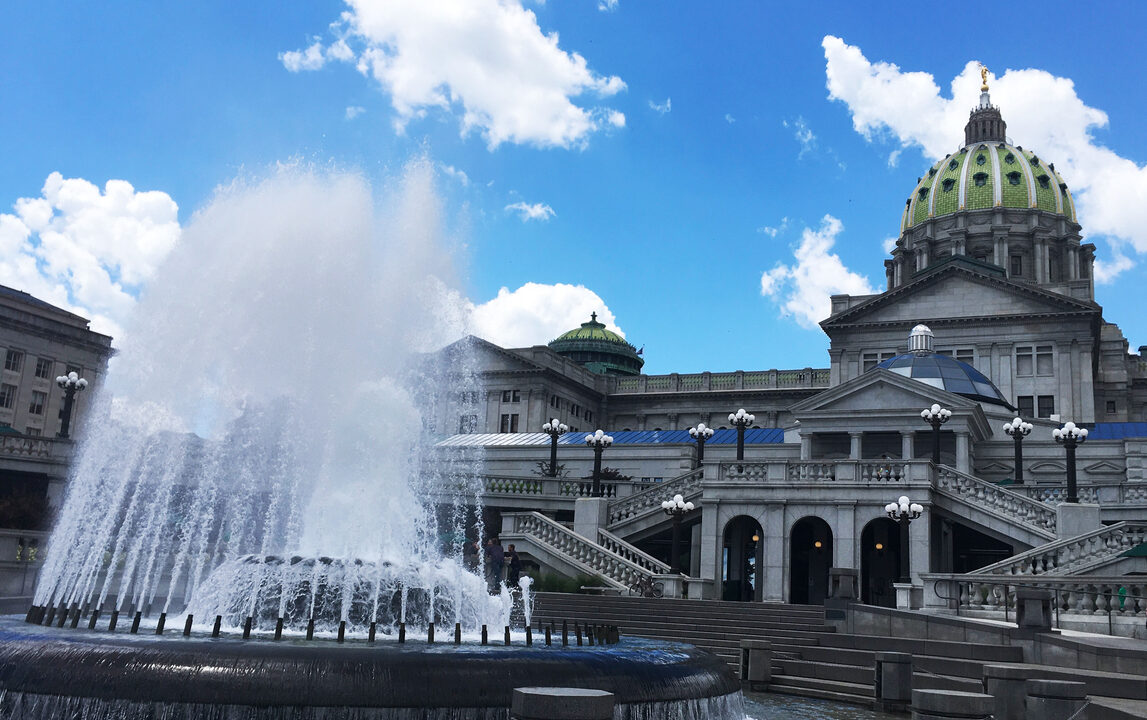Fact Sheet

2022 Pa. Budget Checklist
Limit spending growth to the Taxpayer Protection Act (TPA) index
- The total General Fund spending increase should not exceed the TPA limit of 3.46 percent, or an additional $1.376 billion. In June 2021, lawmakers passed a $39.9 billion budget (an 8.8 percent increase in ongoing General Fund spending after excluding federal relief funds).[1] Lawmakers should limit General Fund spending to no more than $41.15 billion to keep government growth in line with the economy.
- The spending increase under the TPA is far higher than past indexes due to abnormal inflation, fueled by rampant federal spending and printing of money. The TPA is based on population and inflation growth over three years.
- The Independent Fiscal Office (IFO) projects budget deficits beginning in 2023–24 of nearly $2 billion. While the IFO projects higher-than-expected revenues this year, about $2.26 billion above June estimates, long-term revenue growth is not so rosy. With the end of one-time revenue sources, the IFO sees spending rising much faster than revenue in future years.[2]
- Over the next fiscal year, revenues from consumer spending will slow and enhanced federal Medicaid matching funds will expire, yet state government expenditures will grow.[3] It is critical for lawmakers to practice fiscal restraint now.
Use Remaining Federal ARPA funds for one-time uses
- A sustainable budget uses one-time funds for one-time uses. States have until 2024 to spend these funds. Lawmakers transferred $3.84 billion of American Rescue Plan Act (ARPA) dollars to the General Fund in June 2021. Another $2.2 billion in ARPA funds remains unappropriated.[4]
- Pennsylvania should direct funds to paying down the $856 million Unemployment Compensation Trust Fund debt to avoid interest charges that would be paid by additional taxes on employers.[5]
- Other one time uses could include spending $500 million pandemic relief grants for parents who feel their local school’s COVID mitigation efforts are harmful to the educational or health care needs of their child. These relief grants could be distributed through temporary Education Opportunity Accounts (EOAs).[6] EOAs are restricted use accounts funded with tax dollars.
Focus education investments on kids instead of buildings
- The pandemic emphasized the need to empower parents to choose alternatives when their assigned school is not meeting their child’s needs.
- Establish a lifeline scholarship program. The program offers an EOA to any student assigned to a district school in the bottom 15 percent of performance metrics based on state testing. House Bill 2169 is a revenue neutral bill that sends the state portion of per-student funding to an EOA when a student leaves the district school, boosting per-pupil funding at the local level.
- Expand tax credit scholarships. Tax credit scholarships have a proven track record of helping over 50,000 parents improve their children’s education, but limits on the Educational Improvement Tax Credit (EITC) and Opportunity Scholarship Tax Credit (OSTC) programs denied scholarships to over 75,000 applicants in 2019 (latest available numbers). The budget should include a $150 million increase in available tax credits to end the wait list, and an automatic escalator that would expand the scholarship caps by 25 percent when 90 percent of credits are issued in the prior year.
Put People Back to Work
- Pennsylvania’s COVID lockdowns were among the most severe in the nation. Nearly two years after the beginning of the pandemic we have not recovered all those lost jobs and too many Pennsylvanians remain out of the work force. A good budget would create the right conditions for more hiring by:
- Providing small businesses with tax relief. Small businesses that took losses, especially related to the pandemic, should be permitted to carry them forward and deduct them in future years’ tax filings.[7] It’s critical to their long-term survival and already offered to corporations. Allowing small businesses to make exchanges without acquiring tax liability and raising the limit on tax deductions for equipment would give small business owners further flexibility to survive closures and ongoing workforce challenges.[8]
- Right-sizing regulations. Pennsylvania’s sweeping 150,000 plus regulations hamper hiring and entrepreneurship.[9] Lawmakers can streamline the repeal of unhelpful existing regulations, make it easier to track permits, and require legislative approval for regulations that cost more than $1 million a year.[10]
- Making pandemic waivers permanent. Retaining the 300 state waivers—currently extended until March 31st—will allow health care providers to permanently improve access to high-quality health care.
[1] Nathan Benefield, “2021 Budget Takeaways,” Commonwealth Foundation (June 2021), https://www.commonwealthfoundation.org/policyblog/detail/2021-budget-takeaways.
[2] “Five Year Economic and Budget Outlook,” Independent Fiscal Office (November 2021), http://www.ifo.state.pa.us/releases/500/Five-Year-Economic-and-Budget-Outlook/.
[3] Matthew Buettgens and Andrew Green, “What Will Happen to Unprecedented High Medicaid Enrollment After the Public Health Emergency,” (September 2021), https://www.urban.org/sites/default/files/publication/104785/what-will-happen-to-unprecedented-high-medicaid-enrollment-after-the-public-health-emergency_0.pdf.
[4] According to the Treasury Status of Appropriations reports, about $2.41 billion in federal recovery funds remains unappropriated. Status of Appropriations, Pennsylvania Treasury Department (accessed January 2022), https://www.patreasury.gov/tabs/. Act 2 of 2022 appropriates another $255 million to health care providers, Act 2, Pennsylvania State Legislature, https://www.legis.state.pa.us/cfdocs/billInfo/billInfo.cfm?sYear=2021&sInd=0&body=H&type=B&bn=0253.
[5] Title 12 Advance Activities Schedule, Treasury Direct (accessed January 2022), https://www.treasurydirect.gov/govt/reports/tfmp/tfmp_advactivitiessched.htm.
[6] House Bill 2245, Pennsylvania State Legislature, https://www.legis.state.pa.us/cfdocs/billinfo/billinfo.cfm?syear=2021&sind=0&body=H&type=B&bn=2245 and Senate Bill 1015, Pennsylvania State Legislature, https://www.legis.state.pa.us/cfdocs/billinfo/billinfo.cfm?syear=2021&sind=0&body=S&type=B&bn=1015.
[7] Senate Bill 368, Pennsylvania State Legislature, https://www.legis.state.pa.us/cfdocs/billinfo/billinfo.cfm?syear=2021&sind=0&body=S&type=B&bn=0368.
[8] House Bill 105, Pennsylvania State Legislature, https://www.legis.state.pa.us/cfdocs/billInfo/billInfo.cfm?sYear=2021&sInd=0&body=H&type=B&bn=0105. House Bill 333, Pennsylvania State Legislature, https://www.legis.state.pa.us/cfdocs/billinfo/billinfo.cfm?syear=2021&sind=0&body=H&type=B&bn=333.
[9] James Broughel et. al., “A Snapshot Pennsylvania Regulation in 2017,”Mercatus Center (April 2017), https://www.mercatus.org/publications/regulation/snapshot-pennsylvania-regulation-2017.
[10] Tirzah, Duren, “Clear the Red Tape to Rebuild a Stronger Pennsylvania,” Commonwealth Foundation (March 2021), https://www.commonwealthfoundation.org/policyblog/detail/clear-the-red-tape-to-rebuild-a-stronger-pennsylvania;“Senate Approves Regulatory Reform Measures to Spur Job Creation,” Pennsylvania Senate Republicans (May 2021), https://www.pasenategop.com/blog/senate-approves-regulatory-reform-measures-to-spur-job-creation/.